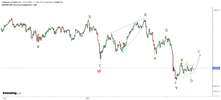- Joined
- 28 December 2013
- Posts
- 6,392
- Reactions
- 24,319
What is position sizing?
For those who don't understand, I should have explained what "position sizing" is In its most basic form. There are those who have trouble with some of the technical terms & this follow-up post will clear this one up.
How much do we bet?
Well, that's a greaty question. The "Position Size" you use decides what your next bet will be in relation to your trading account balance. Position sizing can truly be a powerful tool used correctly. Ultimately, I forgot to say previously that it is up to you to decide what you want to accomplish & how much “portfolio heat” you want to incur as @peter2 would say.
Trading is all about "trying to secure your financial future"
Remember you can’t make money without losing money. As with all trading tools they only work if you consistently use them. Confidence & consistency is the name of this game, as well as money management techniques of course.
Skate.
For those who don't understand, I should have explained what "position sizing" is In its most basic form. There are those who have trouble with some of the technical terms & this follow-up post will clear this one up.
How much do we bet?
Well, that's a greaty question. The "Position Size" you use decides what your next bet will be in relation to your trading account balance. Position sizing can truly be a powerful tool used correctly. Ultimately, I forgot to say previously that it is up to you to decide what you want to accomplish & how much “portfolio heat” you want to incur as @peter2 would say.
Trading is all about "trying to secure your financial future"
Remember you can’t make money without losing money. As with all trading tools they only work if you consistently use them. Confidence & consistency is the name of this game, as well as money management techniques of course.
Skate.






